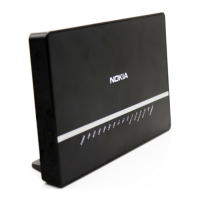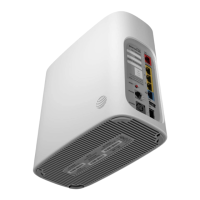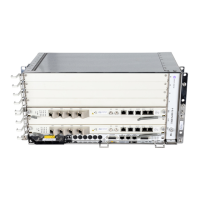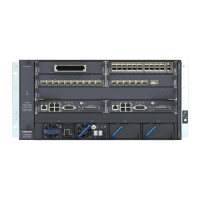FD 100/320Gbps NT and FX NT IHub Services Guide Services Overview
Issue: 13 3HH-11985-AAAA-TQZZA 69
3.11.5 Duplex NT ERPS Performance considerations
This section suggests actions to be performed by the operator to optimize
performance impacts in the event of Active-NT switchover on a Duplex
Load-Balanced NT.
Handling NT Switchover Scenario in a Load-balanced Duplex NT:
• Most Preferred Approach: Use Multi NT lags (lags having ports from both NT), to
prevent NT Switchover from triggering ERP Switch. Forwarding databases (L2
Table, Multicast FIB, ARP, etc.) are not affected.
In case if Multi NT lags are not used, and each ERPS path is on different NT:
• Controlled Switchover case: Do a manual switchover of the ERPS path in the RPL
owner (incase of RPL owner is not ISAM) before administratively triggering NT
switchover in one of the NTs. This should be done to prevent extra outage during
NT switchover due to NT switchover delay, i.e. traffic is already switched to the
newly to-be Active NT before the NT switchover.
3.11.6 Support Service and Solution Combinations
The Ethernet rings are supported Layer 2 service, VPLS and v-VPLS instances. The
following considerations apply:
• Only ports in access or hybrid mode can be configured as eth-ring paths.
• Dot1q ports are supported as eth-ring path members.
• A mix of regular and multiple eth-ring SAPs and PWs can be configured in the
same services.
3.11.7 Configuration guide-lines
Below are the steps for configuring a ring path:
1 Configure eth-ring
2 Configure one of the ring paths with a control VLAN i.e r-aps tag. (a free control
VLAN should be available, that is, no SAP should exist with control VLAN)
3 It is not allowed to make the path admin-up until an eth-cfm mep is configured for
that path.
4 Configure eth-cfm mep for the ring path.
5 Make the path admin-up.
6 Enabling of CCM on eth-ring MEP is optional (required for CCM based signal
failure detection i.e for peers not connected directly).

